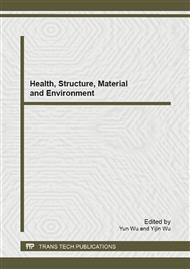p.417
p.421
p.426
p.431
p.436
p.441
p.447
p.451
p.459
Influence of Doping Mn or Ce on the Electrical Properties of PSZT
Abstract:
Lead strontium zirconate titanate (PSZT) ceramic is as one kind of piezoelectric materials can convert between stress and electric. Because of high performance, low cost of PSZT material, this kind of material are widely researched [2, 3] and used in the areas such as electrical sensors, actuators, alarm equipments etc [1]. As the more widely applications of the PSZT material, improving its piezoelectric properties becomes more important [4]. In this paper, for improving the electrical properties of PSZT material, elements manganese (Mn) or cerium (Ce) is doped into the bulk PSZT material. It has been found that, when the doping amount of MnO2 is 0.15wt%, the electrical properties are improved to: tgδ=0.0095, kp=0.634, d33=611pC/N and ε=2523. When the doping amount of CeO2 is 0.2wt%, the electrical properties are enhanced to: tgδ=0.0168, kp=0.621, d33=585pC/N, ε=3324.
Info:
Periodical:
Pages:
436-440
Citation:
Online since:
February 2013
Authors:
Keywords:
Price:
Сopyright:
© 2013 Trans Tech Publications Ltd. All Rights Reserved
Share:
Citation:


